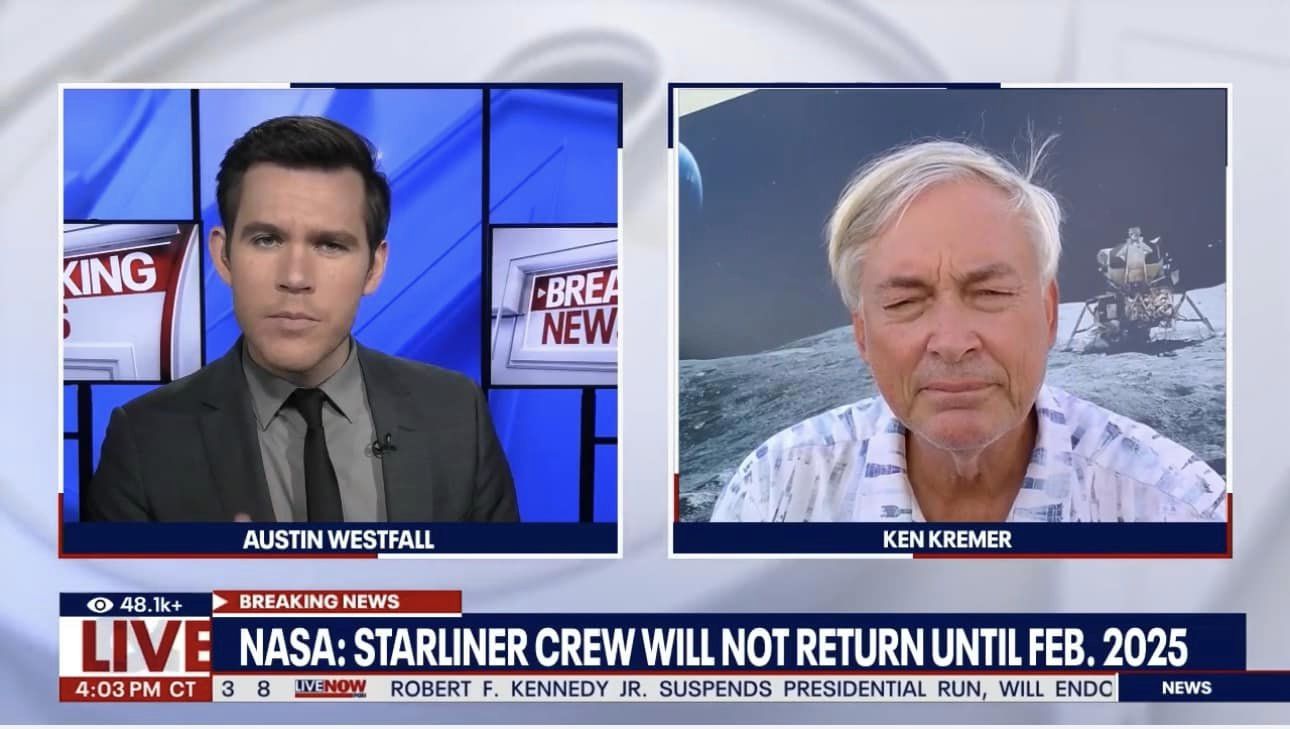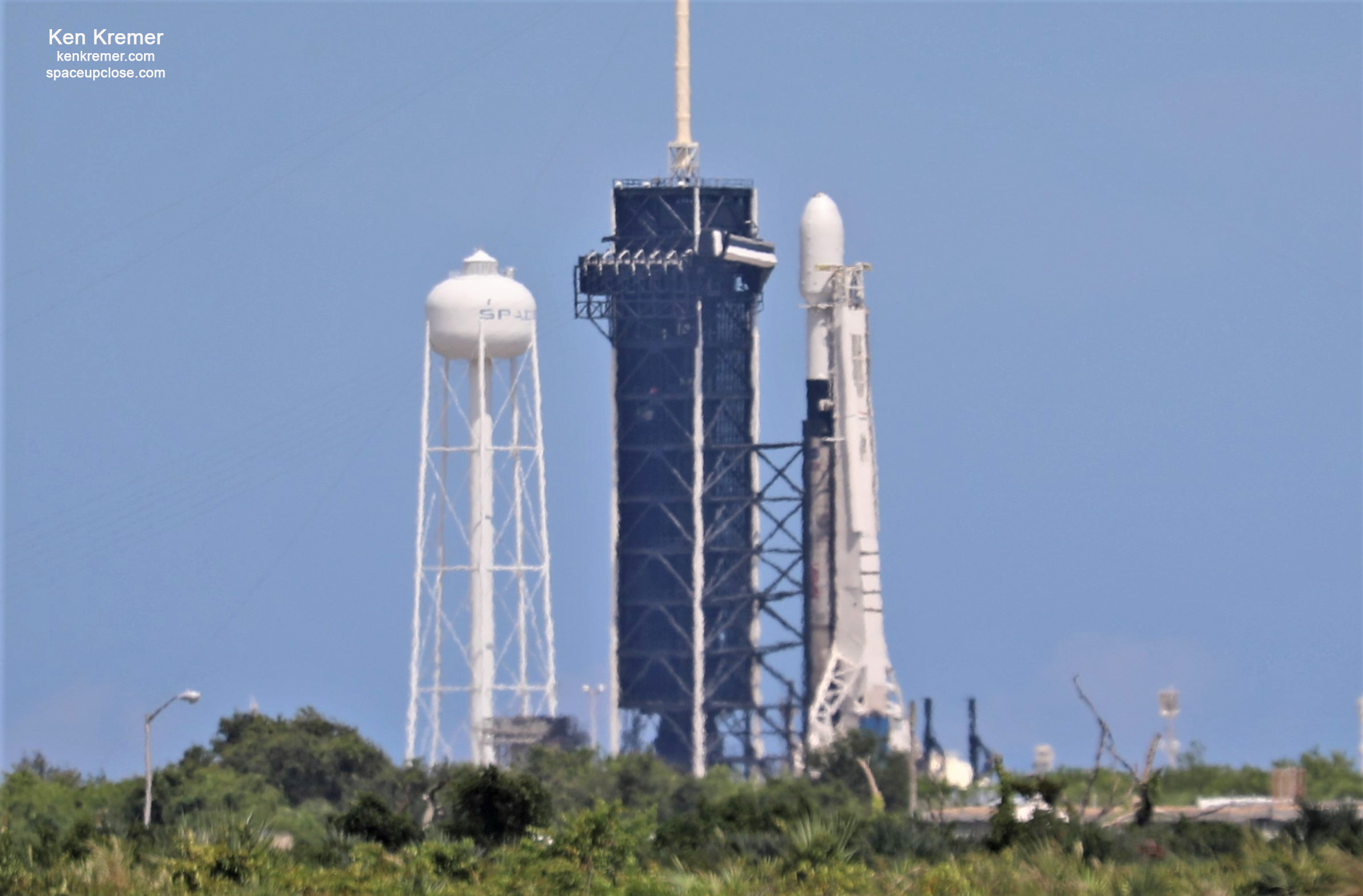
For SpaceUpClose.com & RocketSTEM
KENNEDY SPACE CENTER, FL – In what seems like an endless repetitive time-loop dream ala ‘Groundhog Day’ the trio of back to back Space Coast rocket launches that had planned to light up the Central Florida skies starting this Sunday morning from America’s two premier rocket makers United Launch Alliance (ULA) and SpaceX over the next 3 days have again been reshuffled – now placing SpaceX in the lead with the first of two Falcon 9 launches targeted for Monday morning after ULA this weekend twice delayed the Delta IV Heavy launch of a top secret spy satellite for the U.S. National Reconnaissance Office (NRO) from Sunday Sept. 27 to Monday and then to no earlier than NET Tuesday midnight Sept. 29.
All 3 rocket launch dates involving one ULA Delta IV Heavy and a dynamic duo of SpaceX Falcon 9s have entered near endless uncertainty after ULA engineers discovered problems with the swing arm retraction system at the pad, ULA reported Friday morning.
The launch of a ULA #DeltaIVHeavy rocket carrying the #NROL44 mission for the @NatReconOfc is delayed due to an issue with the swing arm retraction system. Launch is now scheduled for 12:10 a.m. EDT, on Sept. 27, 2020.
— ULA (@ulalaunch) September 25, 2020
It’s just been a whirlwind of launch date changes this weekend.
Under the current schedule – which could change again at any moment – SpaceX has leapt ahead of ULA on the end of month calendar.
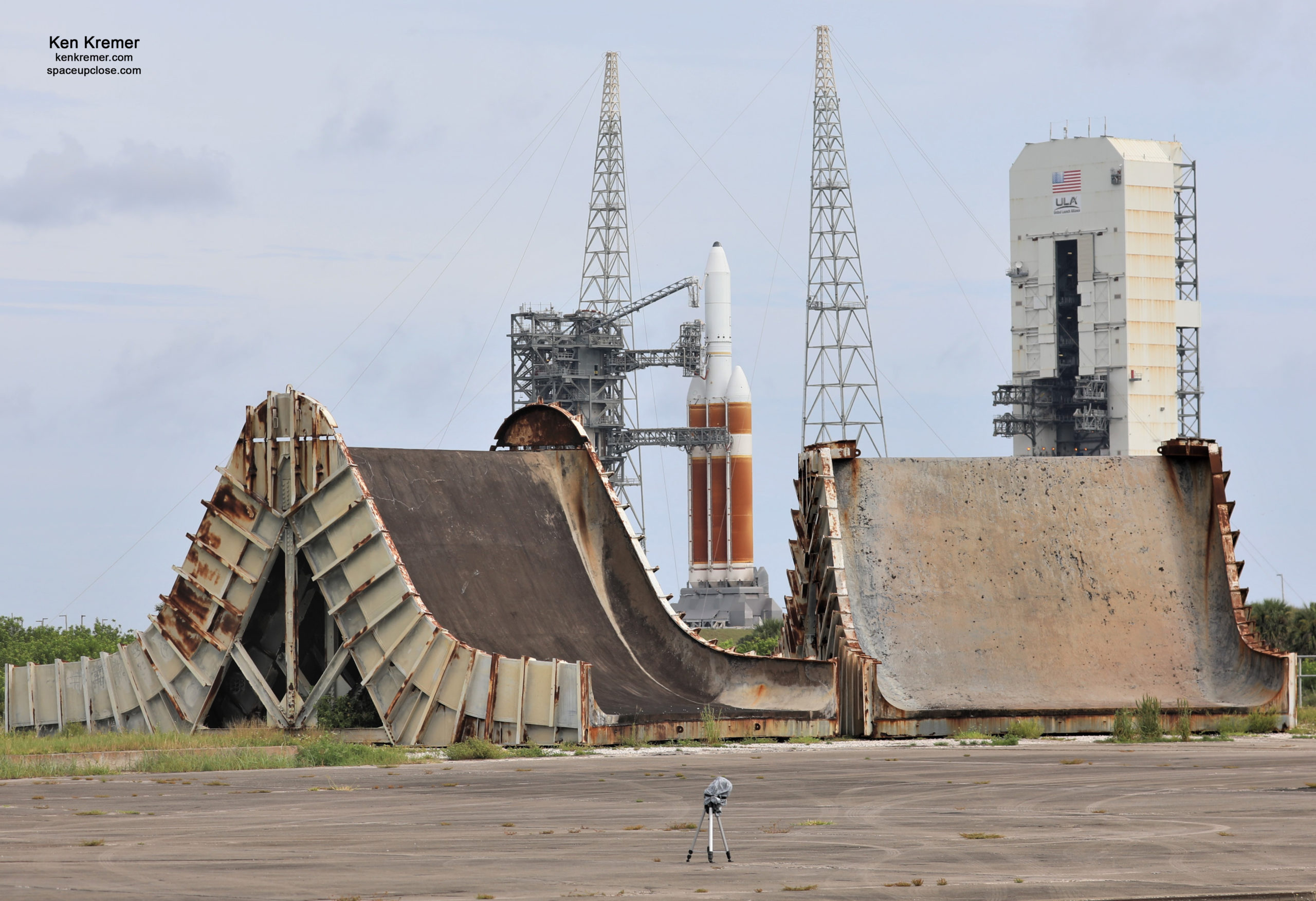
The ULA Delta IV Heavy would follow just past midnight on Tuesday Sept 29 around 12:02 a.m. ET. Finally, the second Falcon 9 would liftoff Tuesday evening at 9:55 p.m.
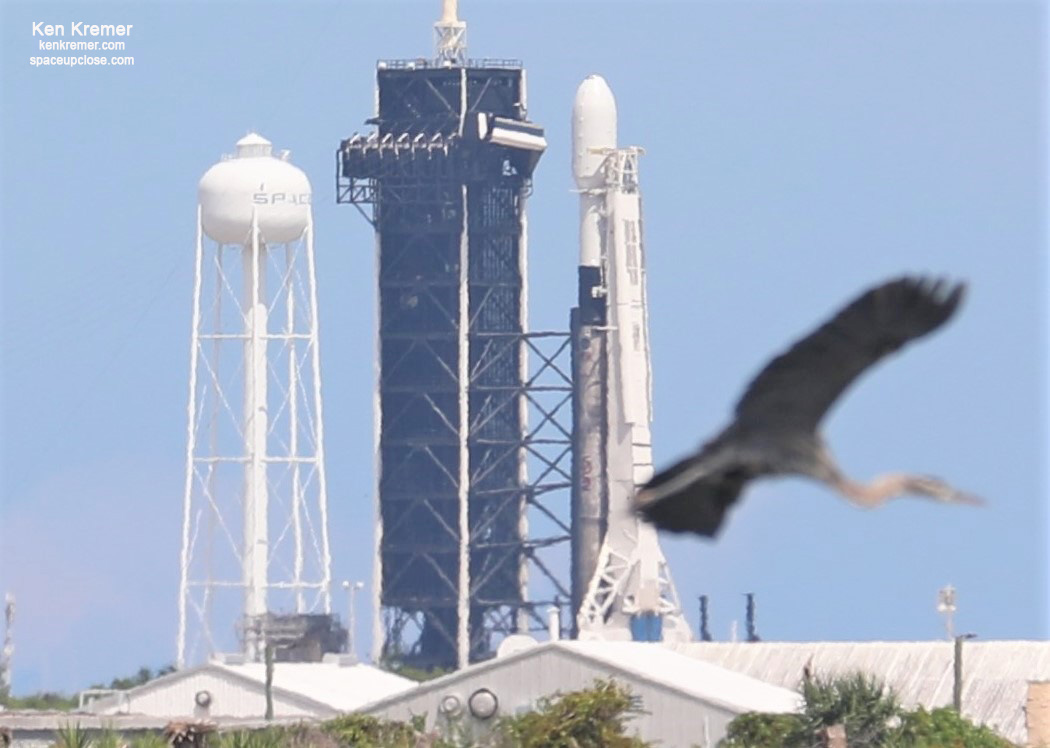
SpaceX is now slated to launch the next Starlink comsat mission first on a recycled Falcon 9 at 10:22 a.m. EDT Monday morning, Sept. 28 from Launch Complex-39A on NASA’s Kennedy Space Center.
“Targeting Monday, September 28 at 10:22 a.m. EDT for Falcon 9’s launch of 60 Starlink satellites from Launch Complex 39A in Florida,” SpaceX tweeted today.
Targeting Monday, September 28 at 10:22 a.m. EDT for Falcon 9’s launch of 60 Starlink satellites from Launch Complex 39A in Florida
— SpaceX (@SpaceX) September 27, 2020
The Starlink mission launch window is instantaneous.
The weather prognosis is moderate.
At this time the Air Force meteorologists team at the 45th Weather Squadron is forecasting a 60% chance of acceptable conditions at launch time.
The Primary concerns are the Cumulous Cloud Rule and Thick Cloud Layer Rule.
This 13th Starlink launch of a batch of 60 Starlink broadband internet satellites was itself delayed from last week by poor weather in the booster recovery zone off the Carolina’s coast resulting from Hurricane Sally and 4 tropical systems in the Atlantic Ocean.
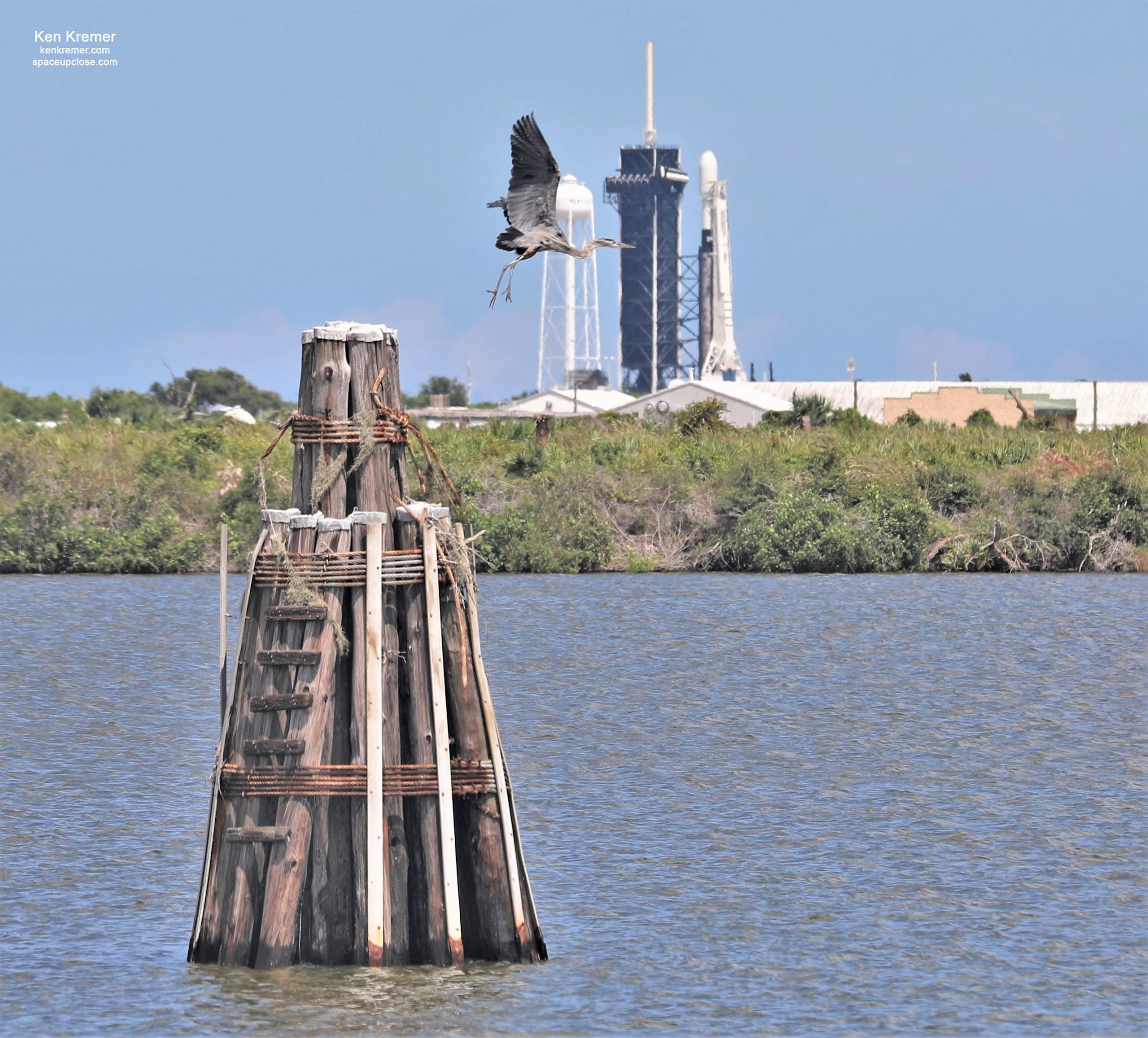
This first stage booster B1058.3 will be launching for the third time on missions to space and back.
Falcon 9’s first stage previously supported launch of Crew Dragon’s first flight to the International Space Station on May 30 on the Demo-2 mission with NASA astronauts Bob Behnken and Doug Hurley onboard and the ANASIS-II commercial communications satellite mission on July 20.
As such the booster still features the NASA Worm logo on the side from the Demo-2 mission.
The mission is also utilizing a recycled nose cone half for the second time and marks the 2nd Falcon 9 Starlink launch this month.
The triple header of 3 in a row rocket launches now bunched up even tighter than a few days ago on Monday and Tuesday will be spectacular and thrilling whenever they take place involving one triple core Delta IV Heavy and two single core Falcon 9s blasting off on 3 different launch pads from Cape Canaveral Space Force Station and NASA’s Kennedy Space Center.
All 3 rocket launches are easily viewable from the Florida Space Coast region and the weather odds are variable for all three – at this time.
The trio of payloads cover both the most clandestine military needs for US National Security and the most open unclassified civilian needs for everyday travel locating – and they are spaced out a little over some 36 hours over two days rather than three days
SpaceX will broadcast both their 2 Falcon 9 launches live starting about 15 minutes before planned liftoff time:
Next up could be ULA about 14 hours later – if the team decides they have resolved the swing arm issue per new tweets this morning from ULA and CEO Tory Bruno:
“Working an issue with the hydraulic system that retracts the swing arm. Bird and payload remain healthy,” tweeted ULA CEO Tory Bruno.
“#DeltaIVHeavy is ready to launch #NROL44 but we are taking extra precautions to ensure all issues are resolved with the swing arm retraction system. We are working towards NET Sept. 29,” tweeted ULA.
Working an issue with the hydraulic system that retracts the swing arm. Bird and payload remain healthy. https://t.co/4VA5RwWw2Y
— Tory Bruno (@torybruno) September 27, 2020
Liftoff of the 23-story tall triple stick United Launch Alliance (ULA) Delta IV Heavy rocket on the NROL-44 intelligence gathering mission for the National Reconnaissance Office (NRO) could be re-slated for about 12:02 a.m. EDT (0402 GMT) Tuesday, Sept. 29, 2020 from seaside Space Launch Complex-37 at Cape Canaveral Air Force Station, Florida – following the earlier scrubs for the hot fire abort and faulty ground launch pneumatic systems and the swing arm problem.
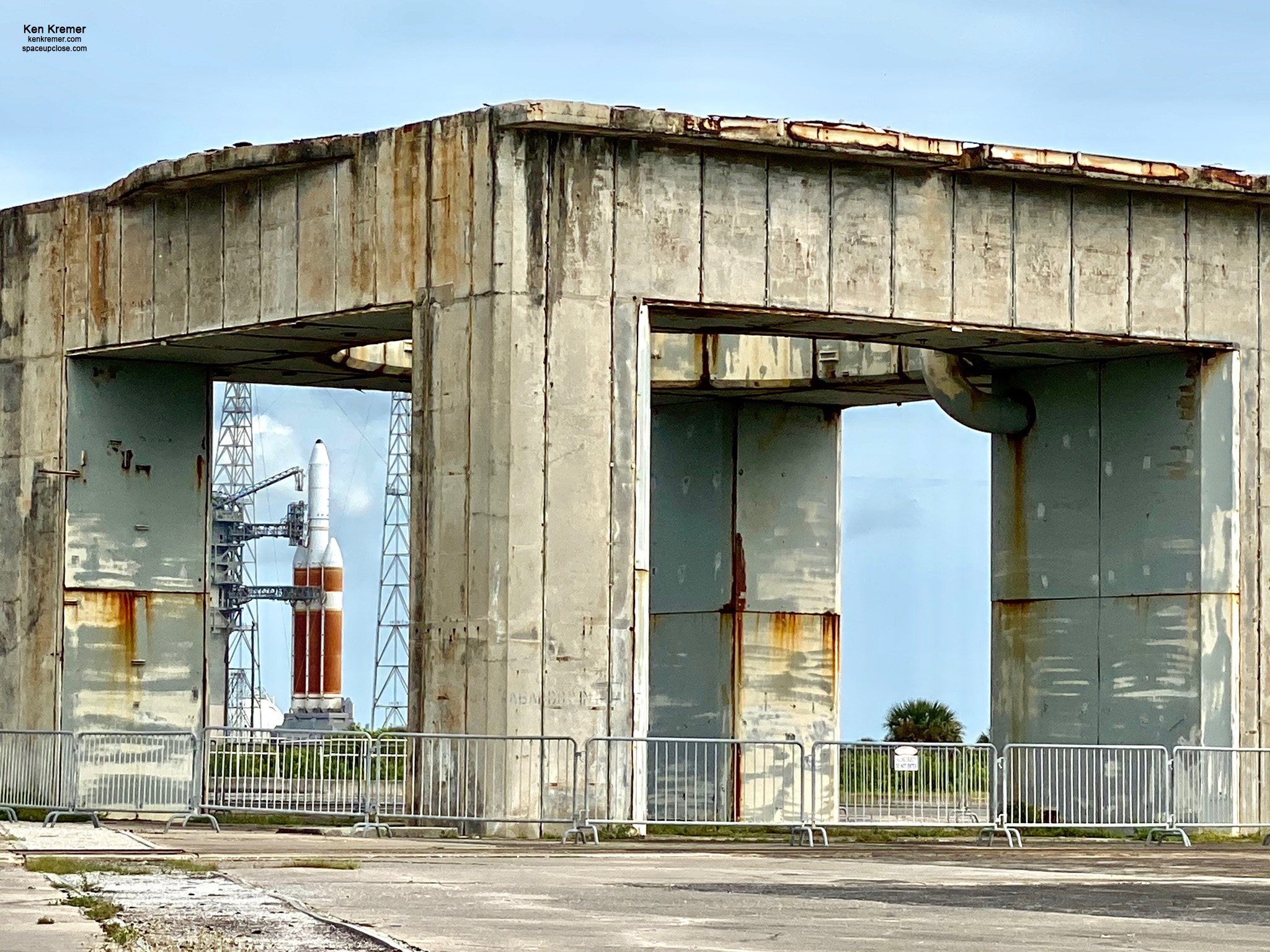
The launch period runs until about 1:30 a.m. EDT (0535 GMT).
You can watch the Delta IV Heavy rocket launch live on a ULA webcast beginning about 20 minutes before liftoff at 11:40 p.m. ET, available at :
www.ulalaunch.com and www.youtube.com/unitedlaunchalliance
The weather odds for the midnight liftoff are decent with 60% GO for conditions at launch time.
The primary concerns are the Thick Cloud Layer Rule and the Cumulous Cloud Rule.
Finally SpaceX will launch the fourth in a series of next generation GPS satellites on a newly manufactured Falcon 9 on Tuesday evening Sept. 29 at 9:55 p.m. EDT from Space Launch Complex-40 on Cape Canaveral Space Force Station, FL.
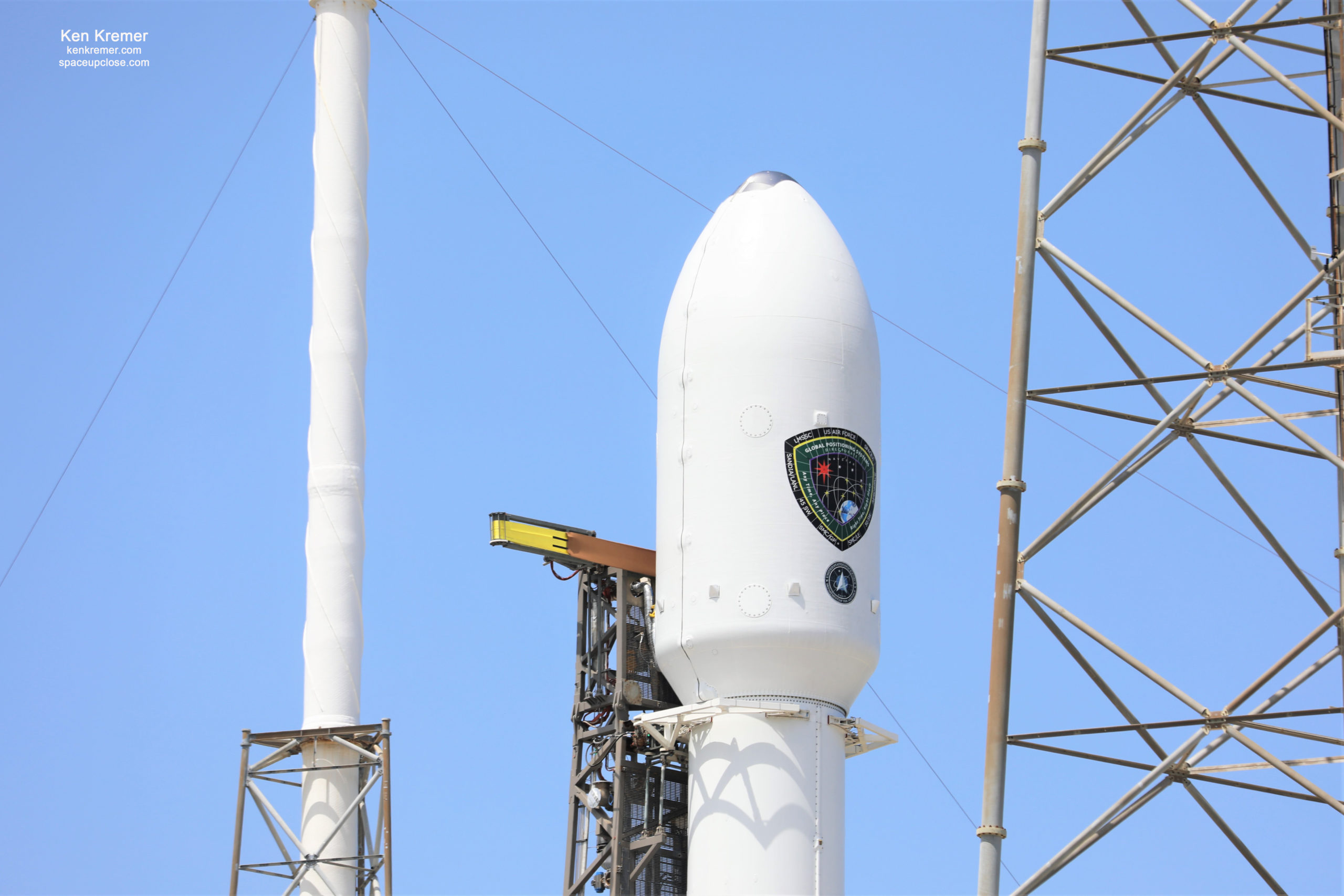
The launch window for the GPSIII SV04 mission for the U.S. Space Force extends until 10:10 p.m.
“GPS III SV04 will join the current 31-satellite operational constellation to continue to provide the gold standard in positioning, navigation, and timing services for more than four billion users worldwide,” says the U.S. Space and Missile Command.
SpaceX completed a successful static fire test of the Merlin 1D first stage engines early Friday morning Sept. 25 – thus paving the way to blastoff Tuesday evening Sept. 29.
https://twitter.com/SpaceX/status/1309443268233445376
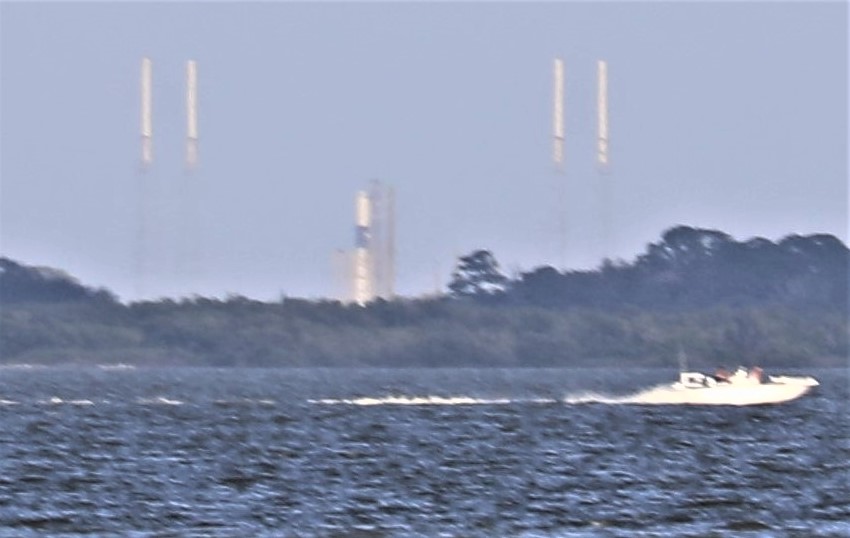
Military leaders announced that the U.S. Space Force will now permit use of ‘flight-proven’ Falcon 9 rocket for military launches following a thorough evaluation and verification of all rocket systems with SpaceX.
This 1st stage GPS booster will be recovered on the sea going droneship, returned to Port Canaveral and reflown on the next GPS III launch of the SV05 satellite next summer, Dr Walter Lauderdale of the Space and Missile Systems directorate told me during a Sept. 25, 2020 media briefing.
SpaceX will attempt to recover both Falcon 9 boosters on their 2 droneships
Watch my commentary at WFTV Channel 9 ABC TV News Orland in this Sept. 25/26 report about 3 upcoming Space Coast launches in 3 days by ULA and SpaceX
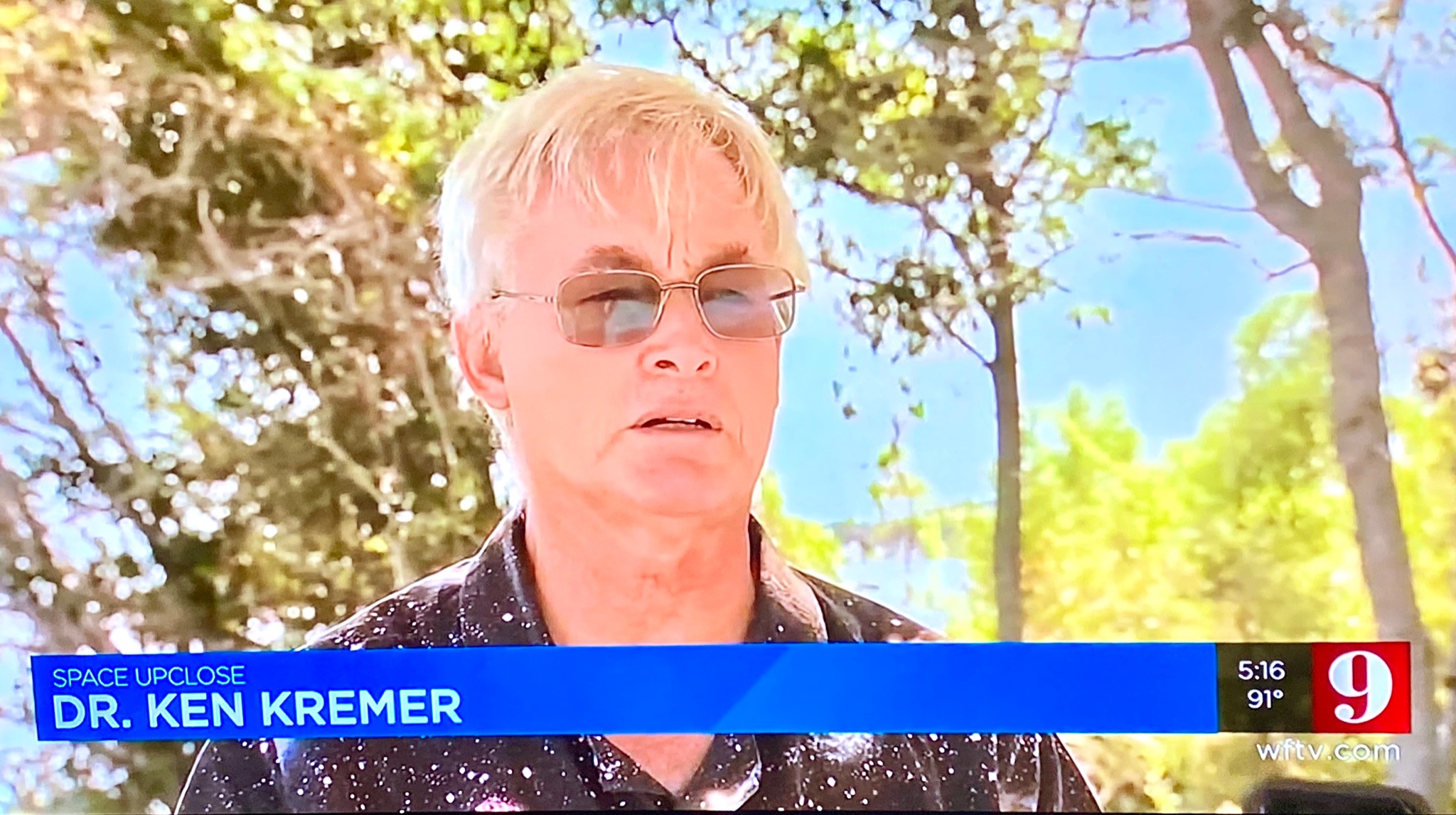
Watch my live interview discussion of current space missions and launches on Sept. 18 edition of ‘Stay Curious’ daily space show presented by the American Space Museum, Titusville, FL.
https://www.facebook.com/175507880819/videos/1058636561206413
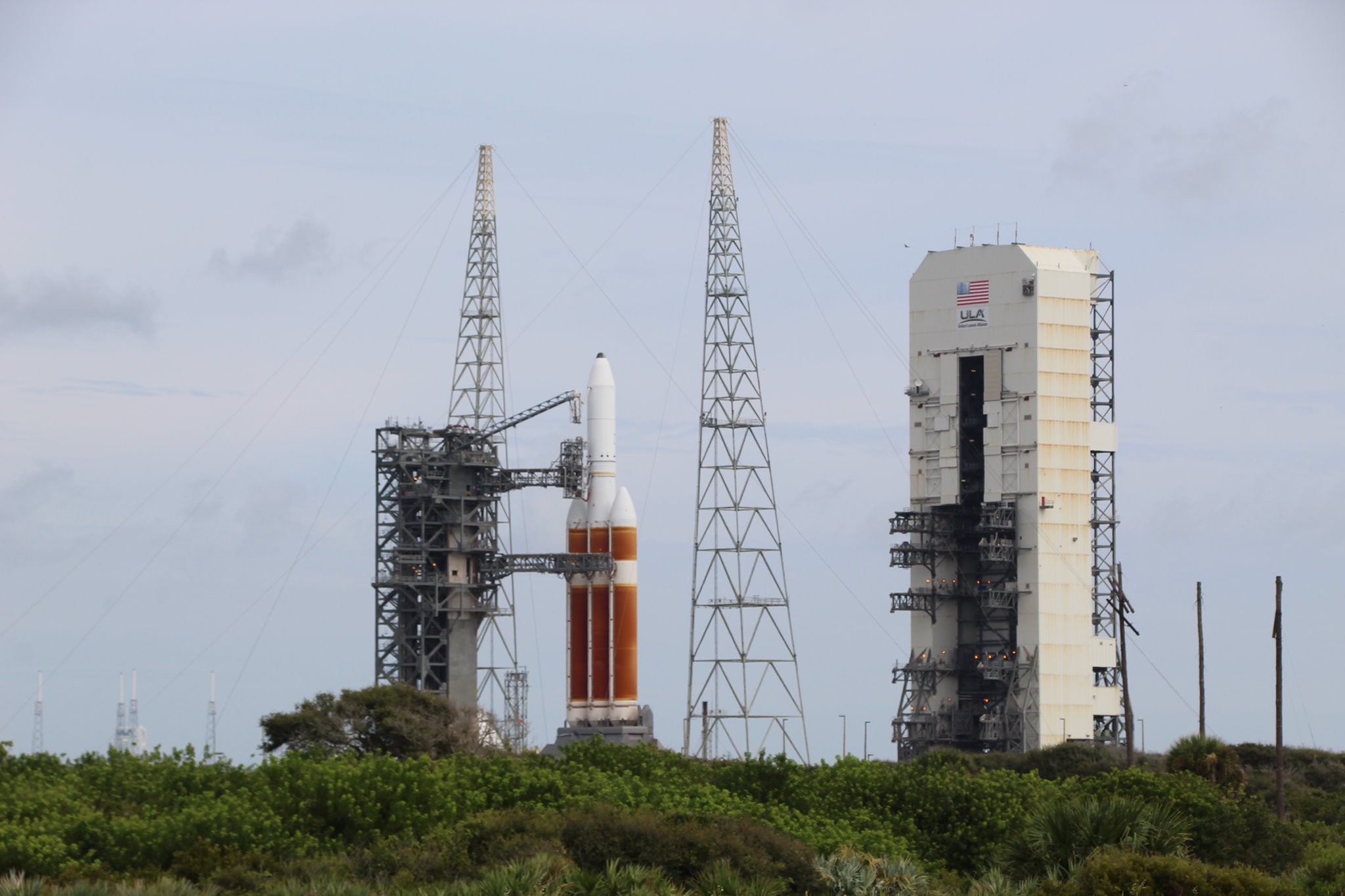
Watch Ken’s continuing reports about Starlink, Commercial Crew and Artemis and onsite for live reporting of upcoming and recent SpaceX and ULA launches including Demo-2, Starlink, X-37B, Solar Orbiter, Mars 2020 and more at the Kennedy Space Center and Cape Canaveral Space Force Station.
Stay tuned here for Ken’s continuing Earth and Planetary science and human spaceflight news: www.kenkremer.com –www.spaceupclose.com – twitter @ken_kremer – email: ken at kenkremer.com
Dr. Kremer is a research scientist and journalist based in the KSC area, active in outreach and interviewed regularly on TV and radio about space topics.
………….
Ken’s photos are for sale and he is available for lectures and outreach events
Please consider supporting Ken’s work by donating at Patreon:
https://www.patreon.com/kenkremer
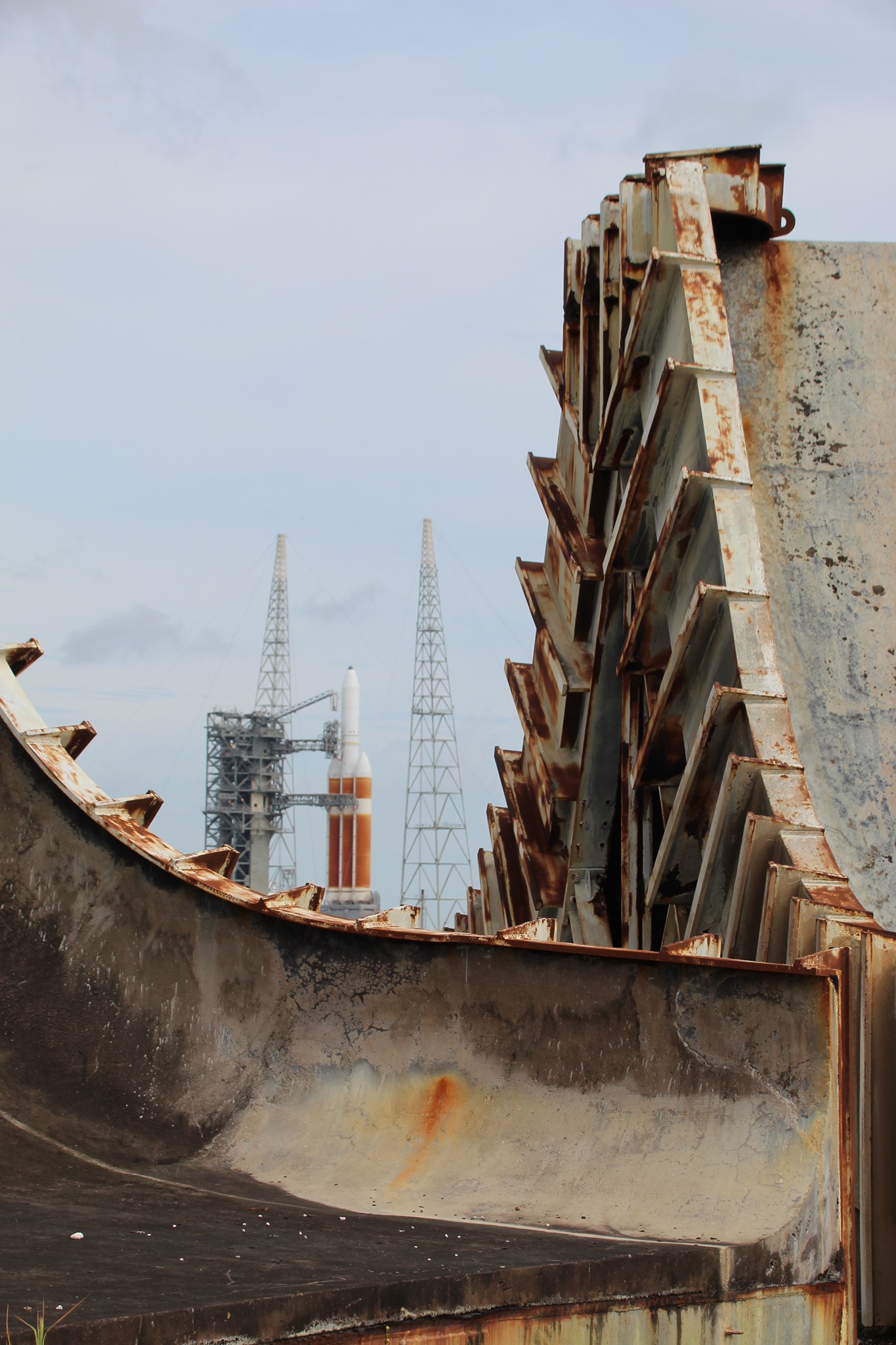
x


